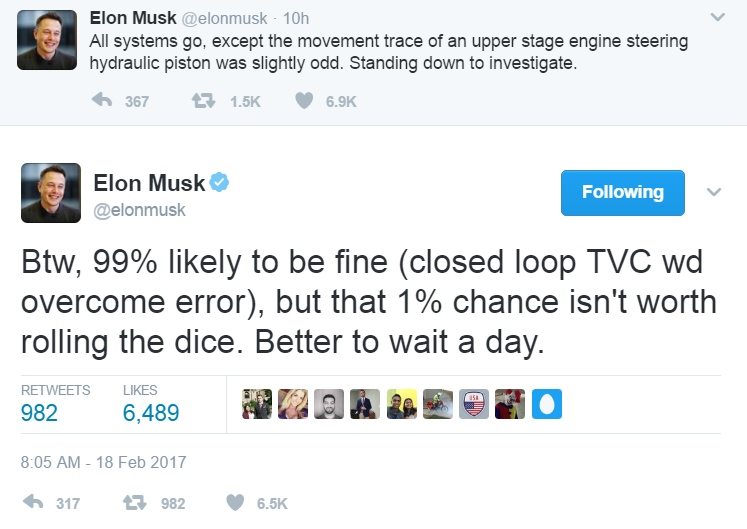During a pre-launch briefing held by NASA, SpaceX's President Gwynne Shotwell discussed a lot of assets of the new pad and how honoured SpaceX is about leasing the historic pad. She stated that SpaceX has taken good care of the pad and saved 'precious' parts of the launch pad and upgraded things for their use. The rotating service structure is also being taken down piece-by-piece whenever they have time for it and giving the scrap metal back to NASA. After that, they moved to the Q&A part of the briefing where people asked many different questions on upcoming launches, Mars, reusability, and crewed missions. Gwynne stated that Falcon Heavy will be flying this summer once LC-40 is back up and running, as well as there are many customers wanting to fly on FH. She also talked about Red Dragon and that they're now looking more toward the 2020 timeframe for the first launch. SpaceX wants to put more time and resources into the program before launching so they can also

focus on Crew Dragon and Falcon Heavy. SpaceX is planning on starting crewed launches in 2018 and Gwynne is confident that will happen on time. Along with crew launches, they've been working on a redesign on the Merlin engines because of cracks in the turbine wheel that they've been flying with for all Falcon 9 launches. The redesign needs to happen so the engines have no issues during launch for the safety of the crew and they will be used sometime this year. Nothing was revealed about the spacesuits for the crew but Gwynne said that they look "really cool". Reusability was then brought into conversation and that the second stage will not be reused for any of the Falcon rockets because of high orbital speeds. Although, she addressed that fairings will be recovered and reused on one of the following missions this year. The first reused booster will be launched on the SES-10 mission from LC-39a sometime in March. Launch Complex 40 should be up and running sometime this summer. She also said that the Falcon 9 Block 5 has an increase in
performance, some manufacturing improvements, and about 100 other changes on the vehicle. With all this information given to us, it shows that this year will be a big year for SpaceX with the maiden launch of Falcon Heavy, the first reused booster, and recovery of the payload fairings.





 This morning, SpaceX had begun fueling their Falcon 9 rocket in preparation to launch supplies and experiments to the International Space Station. Early in the count, there was a slight issue with the second stage's TVC (Thrust Vector Control) system that helps "steer" the rocket in the vacuum of space. SpaceX continued moving forward with the launch and called a "hold hold hold" at T-13 second to launch to not risk anything going wrong with the second stage during flight. The next launch opportunity to the ISS is tomorrow (Sunday) morning at 9:38am EST.
This morning, SpaceX had begun fueling their Falcon 9 rocket in preparation to launch supplies and experiments to the International Space Station. Early in the count, there was a slight issue with the second stage's TVC (Thrust Vector Control) system that helps "steer" the rocket in the vacuum of space. SpaceX continued moving forward with the launch and called a "hold hold hold" at T-13 second to launch to not risk anything going wrong with the second stage during flight. The next launch opportunity to the ISS is tomorrow (Sunday) morning at 9:38am EST.